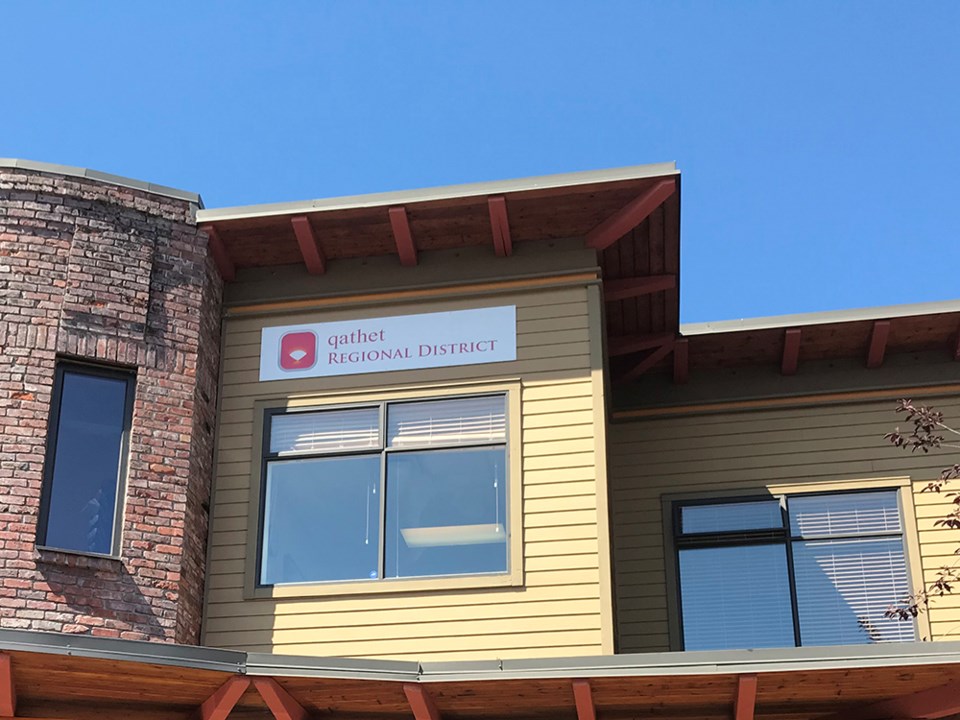qathet Regional District (qRD) board will give consideration to amending the official community plan (OCP) bylaws for Electoral Areas A, B and C.
At the May 3 planning committee, directors considered a three-part motion – one for each electoral district – for the amending bylaws to be presented at the regional board meeting on May 24 for first and second reading, and that the three bylaws to be amended be sent for public information meetings after the first two readings to seek feedback from the public.
According to a staff report, the amending bylaws will ensure a consistent policy approach across the region regarding secondary suites and accessory dwelling units, recognizing the important role these forms of housing provide in meeting current and future housing needs for one- and two-bedroom rental accommodation. The recently completed Texada Island official community plan was used as a guide for creating clear and consistent policy statements, the staff report stated.
The staff report also stated the proposed amending bylaws would support qRD’s strategic goal to plan and advocate for housing diversity.
Electoral Area B director Mark Gisborne said he had been thinking about how to move forward with the proposed amendments and had some concerns about controlling density.
“I know we’ve talked about floor area in the past, and that is something I really would like to see as an option,” said Gisborne. “I would also like to see a total floor area with different specifics in relation to each area. We have rural residential, we have low-density residential, suburban residential, and if we change the OCP to say you can have as many dwellings as you want in all of these areas, then you can have an area that’s rural residential where suddenly someone starts building right to the property line.
“I’m wondering if we should kick this back to staff and ask for options to control the density in some of these more rural areas – the option of total floor area.”
Electoral Area C director and board chair Clay Brander said he believes Gisborne’s suggestion would be doing a deep dive into the OCP.
“From what I recall, the direction was to bring the OCPs into line with each other, to have similar definitions, and continuity across them,” said Brander. “When the time comes for these OCPs to be up for renewal, maybe that’s the opportunity to dig deeper into the minutia and square footage of the different varieties of areas.”
Manager of planning services Laura Roddan said the purpose of the report is to build on work staff did in June 2022 to prepare draft amending bylaws for the three qRD electoral area OCPs. She said the purpose of the amendments respond to the qathet regional housing needs report that was done in 2021, which identified secondary suites, and one- and two-bedroom accessory dwelling units being an important source of rental housing for people in the area.
“What we’ve heard from people is they wanted the ability to have accessory dwelling units on their properties, for reasons such as their kids moving back to the region and couldn’t afford to buy a house or find rental housing anywhere,” said Roddan. “Other examples were people whose parents were aging, to be able to build an accessory dwelling unit for their parents. Another was to have rental housing to pay down a mortgage.
“The purpose was to look at the OCPs and provide some flexibility to allow for accessory dwellings.”
Roddan said largely, there is no zoning regulation for the regional district to regulate densities, and there is no building bylaw to regulate the size of homes or where they are built, so these are policy statements.
“There is a trend in the province, particularly in rural regional districts, to take this approach,” said Roddan.
Gisborne said he’d like to refer the matter back to staff and have the total floor area ratio considered for secondary suites and accessory buildings. The motion was defeated.
The planning committee then endorsed sending the amended bylaws for the three electoral districts to the regional board for first and second reading, and that public information meetings be held in the three electoral areas.



